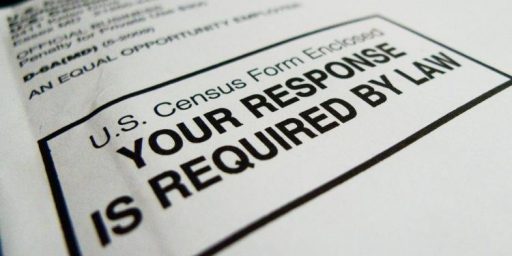Sun Belt Migration Good News for Republicans
The Census Bureau has released projections that the population of states in the Sun Belt will continue to expand while the Rust Belt will continue to decline. Analysts agree this is good news for the GOP.
Sunny days ahead for GOP as population shifts south (Washington Times)
Migration from liberal bastions in the Northeast and Midwest to the Sun Belt states will boost Republican electoral strength in the coming decade, making it tougher than ever for Democrats to win the presidency without carrying states in the South or Southwest. The Census Bureau’s latest projection of population shifts, the first in eight years, shows a dramatic movement from the North to Southern and Western states over the next 30 years. The study points to a political movement as well. Heavily Democratic states such as New York, New Jersey, Illinois and Michigan will go on losing congressional seats and thus electoral strength in presidential elections, political analysts say. At the same time, they say, Republican states such as Florida, Texas, Arizona, Georgia and Nevada likely will gain congressional and electoral clout.
“The net beneficiary of this will continue to be the Republican Party because the population shift is moving into an environment that is heavily dominated by the Republicans,” says Merle Black, a professor of politics and government at Emory University and author of books on political shifts in the South. “In the 2002 and 2004 exit polls, we saw for the first time a majority of Southern white voters identifying themselves as Republicans and Democratic identification falling to a low 20 [percent] to 25 percent,” Mr. Black says. This doesn’t mean that Democrats cannot win, but population shifts give the GOP “a long-term structural advantage,” he says, “and assuming they nominate credible candidates, they start with a strong base.” He adds: “The Republicans will continue to be the dominant party in the South for the foreseeable future.”
Census Bureau projections show significant population shifts over the next three decades. The share of Americans living in the Northeast and Midwest will fall from 42 percent to 35 percent of the population, while the South and West will rise from 58 percent to 65 percent. Among the 10 most populated states, Democrat-leaning Michigan and New Jersey will be supplanted by heavily Republican and fast-growing Arizona and North Carolina. Ohio, a pivotal swing state in presidential races, will drop from seventh to ninth place in population, while Republican-rich Georgia will move up from 10th to eighth.
Over a shorter term, Florida is expected to pass New York and move into third place by 2011, with California and Texas remaining in first and second, respectively. California, Florida and Texas are expected to grow by more than 12 million in population and will account for 46 percent of the growth between 2000 and 2030. Overall, the South’s population is projected to grow by 42.9 percent and the West by 45.8 percent, at the expense of the Midwest (9.5 percent) and the Northeast (7.6 percent).
While I’m sure the Census Bureau has the best guess on the future migration trends available, I honestly don’t understand how one can project from the past and just assume those trends will continue three decades into the future. One would think that changes in the nature of the economy or in the tax and regulatory policies of Rust Belt states could reverse these trends.
Moreover, while Merle Black is far more qualified than I am to pontificate on Southern politics, it’s by no means written in stone that the GOP will continue to dominate in the South and Southwest–although I’d certainly bet that way if forced to do so. It was not that many years ago that political analysts spoke of a “Republican lock” on the Electoral College, predicated on the fact that the South not only dominated the South but could always count on California. Bill Clinton picked that lock in 1992, with the help of changing Demographic trends in California, and the Democrats have won California every in presidential contest since.
The nature of two-party systems tends to be cyclical. Like the Democrats before them, the Republicans are likely to become arrogant in their majority status and lose touch with the mainstream. At the same time, their base is likely to become increasingly frustrated that the GOP has failed to put its stamp on the major social issues of the day despite dominating the White House since 1969, the Supreme Court since 1970,* and Congress since 1995.
*That the GOP has dominated the Supreme Court is debatable, to be sure. The fact remains, though, that with the appointment of Harry Blackmun in 1970 by Richard Nixon, the Court had a majority of Justices nominated by Republican presidents: Harlan, (Eisenhower, 1955); Brennan (Eisenhower, 1957); Stewart (Eisenhower, 1958); CJ Burger (Nixon, 1969); and Blackmun (Nixon, 1970). (See this Supreme Court timeline and this list of Justices by appointer.) Despite many of those appointees proving themselves quite liberal once on the bench, that string has been unbroken.



Most of the Democrats I meet here in the South are very conservative. Nine of my father’s brothers and sisters are democrats, mainly because my grandfather was a democrat. Of course, at this time, democrats were much more conservative. When they talk about what they believe instead of attacking Bush, for example, they seem to spout the Republican mantra. Democrats should fear the South because the liberal wing of the Democrat party is hard to find around here.
Take the Republican Senatorial pickups this past election. I believe it was Louisiana who voted a Republican in for the first time since Reconstruction. It seems that since the media has gotten slightly more balanced in the past decade that the South has been voting to the right–not moving right, just voting right.
Just my amateur observations.